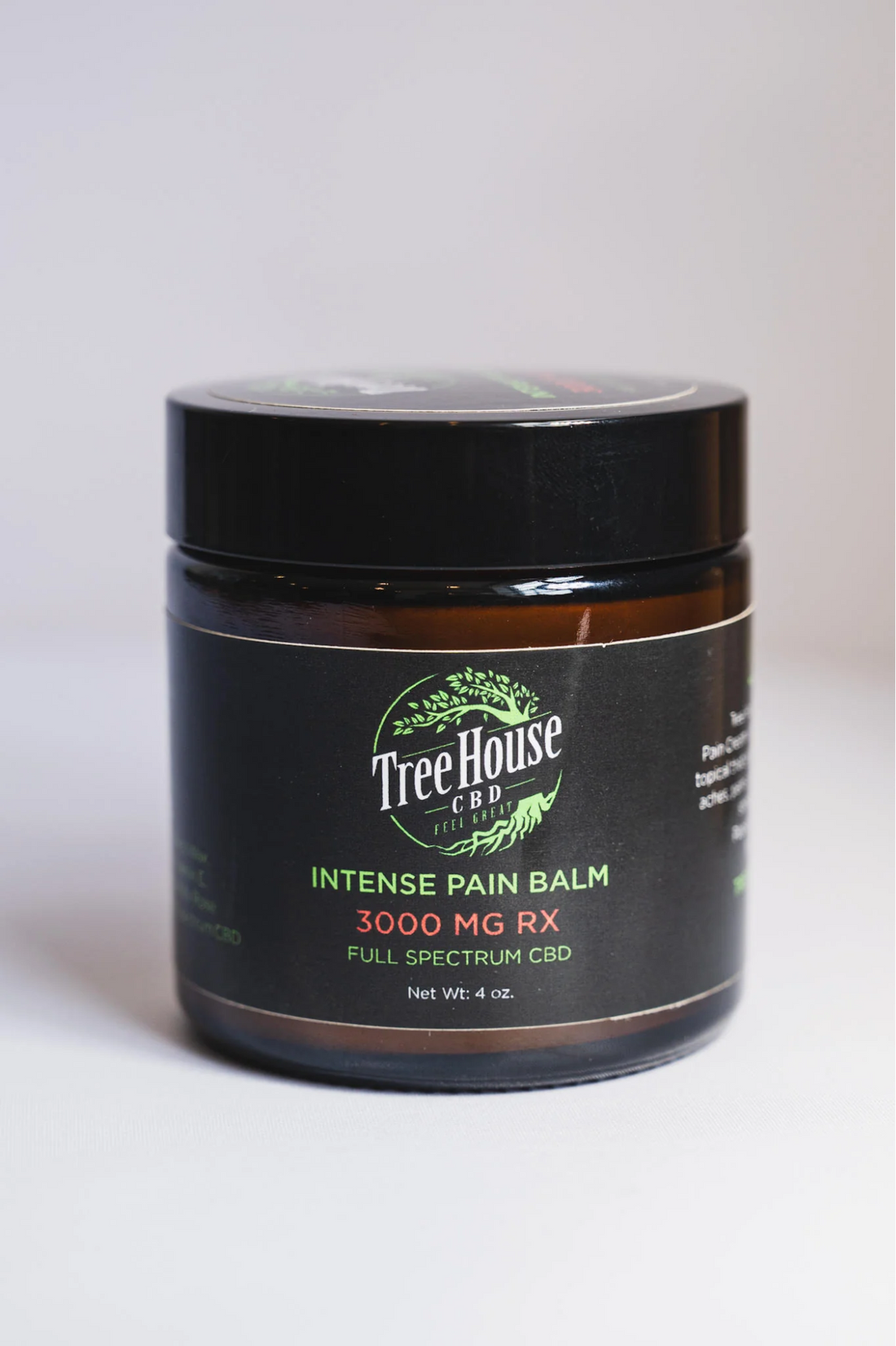Living with chronic pain is a tough challenge. CBD, or cannabidiol, is a key compound in hemp that can help manage this pain without the high. This guide will show you how CBD tackles pain and how to use it safely.
Key Takeaways
- CBD interacts with the body's endocannabinoid system to manage pain by reducing inflammation and nerve pain. It can help with chronic pain, arthritis, and neuropathic pain.
- Safe use involves starting with a low dosage of CBD and gradually increasing it while monitoring your body's response. Different forms like oils, creams, or edibles may require varying dosages.
- Methods of consumption affect how quickly you'll feel relief. Capsules take longer to work than sprays or tinctures, while topical products are best for specific areas of pain.
- Consultation with a doctor is key before using CBD for pain management to avoid unwanted side effects and ensure it does not interfere with other medications.
How CBD Manages Pain

CBD manages pain by interacting with the endocannabinoid system, reducing inflammation, and alleviating nerve pain. It is used for chronic pain, arthritis and joint pain, as well as neuropathic pain.
Interaction with the Endocannabinoid System
CBD helps manage pain through how it works with the endocannabinoid system in our bodies. This system has receptors called CB1 and CB2. Endocannabinoids, which our body makes, fit into these receptors like keys in locks.
CBD influences these receptors, changing how we feel pain. It can make pain signals weaker and enhance endocannabinoid levels by slowing down their breakdown. This action allows them to have more impact on reducing discomfort.
Reduction of Inflammation
CBD also plays a big role in fighting inflammation. Studies, like one in the European Journal of Pain, show that putting CBD on the skin can lower pain and swelling from arthritis.
This is because CBD has anti-inflammatory effects. These studies tell us that CBD can reach deep into sore joints and muscles to calm down the body's response to injury or sickness.
Besides its use for arthritis pain relief, this aspect of CBD helps with other conditions linked to inflammation. For instance, people with chronic pain or diseases causing long-term swelling might find comfort using CBD oil or topical products.
By applying cannabidiol directly to where it hurts or taking it under the tongue, they get fast results without the bad side effects often seen with regular painkillers or NSAIDs.
Alleviation of Nerve Pain
After tackling inflammation, we move to nerve pain. CBD can help with this type of pain because it protects nerves. Research shows it lessens nerve damage or dysfunction pain. This is crucial for people dealing with chronic conditions that harm their nerves.
CBD interacts with receptors in our body linked to the feeling of pain. By doing so, it may reduce the suffering caused by damaged nerves. This benefit is particularly important for those suffering from diseases like multiple sclerosis (MS) where nerve damage plays a big role in their pain experience.
Types of Pain Treated with CBD

CBD is used to treat various types of pain including chronic pain, arthritis and joint pain, and neuropathic pain. It has been found effective in managing these conditions by interacting with the endocannabinoid system, reducing inflammation, and alleviating nerve pain.
Chronic Pain
Chronic pain affects many people for a long time. CBD has shown promise in helping manage this type of pain. A study in the Journal of Pain Research with 253 persons found that 59.0% felt better after using CBD. This suggests that CBD could be a helpful option for long-term pain management.
A CBD and THC combination spray has been shown to be effective in easing cancer-related pain during tests. People seeking relief from long-lasting pain without using strong drugs might find CBD helpful. It can be applied topically or consumed in various forms, making it easy and flexible to use according to individual needs.
Arthritis and Joint Pain
Many people with arthritis try CBD for their joint pain. The Arthritis Foundation has shared thoughts on using CBD for such conditions. They note that stories from patients are mixed and more research is needed to fully understand its effects.
Safety of CBD for those with arthritis still needs clear evidence. Users should talk to doctors before trying it, as the right approach varies per person. This caution helps in dealing with pain without risk.
Neuropathic Pain
Moving from arthritis to another form of discomfort, neuropathic pain targets the nerves. This type of pain happens when there's damage to the nervous system. CBD has shown promise in easing this kind of pain.
A study in 2020 found that using topical CBD oil helped people with peripheral neuropathy. They felt less pain and fewer prickly sensations.
CBD works by affecting how our body handles pain signals, especially useful for conditions like diabetic neuropathy. By applying CBD oil directly where it hurts, patients saw a big drop in their discomfort and sensory symptoms without bad side effects.
How to Use CBD for Pain

Determining the right dosage and method of consumption for using CBD to manage pain is crucial. Our blog will guide you through it all.
Determining the Right Dosage
Finding the right dosage of CBD for pain involves mindful actions. Start low and go slow to see how your body reacts.
- Begin with a small dosage: Experts suggest initiating with a dose as low as 5-10 milligrams per day. This helps you assess how your body reacts to CBD.
- Increase gradually: If you don't sense any relief after a week, elevate the dosage by 5-10 milligrams. Continue this process until you find relief.
- Pay heed to your body: Some individuals might require higher doses than others. It depends on your weight, metabolism, and the type of pain you have.
- Consider different types: CBD comes in oils, skin creams, and edible forms like gummies. Each type enters the body differently which can influence how much you need.
- Use a journal: Keep a record of your dosage and how it influences your pain each day. This aids in finding the optimal amount quicker.
- Examine product labels carefully: Products differ in strength and concentration of CBD. Always check the label to know precisely how much CBD is in each dose.
- Consult with a doctor: A healthcare provider who understands CBD can provide useful advice based on your health requirements and present medications.
- Stay updated on legalities: The legal status of cannabidiol oil may vary depending on your location, affecting its accessibility and concentration boundaries.
- Consider cost: Higher daily doses can become pricey over time, so bear this in mind when choosing your ideal dosage.
By adhering to these steps carefully, users can effectively manage their pain with CBD while minimizing unwanted side effects.
Method of Consumption
You have many ways to use CBD for pain. Capsules go through your stomach, and you might wait up to 3 hours to feel better. Sprays and tinctures work faster because they go right into your blood from under your tongue; expect relief in 15 to 45 minutes.
For pain in places like your knees or back, rubbing creams or gels on the skin could help, but we're not sure how well they get CBD into your body.
Choosing the right method of CBD intake can significantly influence its effectiveness for pain relief.
Frequency of Use
To figure out how often to use CBD for pain, start with a small dose. If you don't feel better in three or four days, add a bit more. Keep doing this every few weeks. Using CBD like this helps you find the right amount without using too much at once.
Sometimes, even after trying different amounts of CBD and low-THC products for several weeks, you might not feel any relief. In these cases, stopping the use of CBD may be the best choice.
It's important to listen to your body and adjust or stop as needed.
Explore Treehouse CBD's Pain Relief Products

Treehouse CBD offers a diverse collection of high-quality CBD-infused products designed to provide effective pain relief. Their product range includes various options such as gummies, balms, and roll-ons, each crafted to soothe pain and soreness naturally. For those seeking convenient and tasty pain relief, the 600 mg CBD Gummy Bears and 300 mg CBD Gummy Bears offer a simple way to incorporate CBD into your routine.
For more targeted relief, Treehouse CBD provides potent options like the Intense Pain Balm available in 1,000 mg, 2,000 mg, and 3,000 mg strengths, designed to address severe discomfort. Additionally, the CBD Freeze Pain Roll-on and CBD Sport Stick are excellent choices for easy, on-the-go application, offering cooling relief to sore muscles and joints.
Whether you're dealing with chronic pain, arthritis, or muscle soreness, Treehouse CBD's selection of full-spectrum products ensures there's a suitable option to help you manage pain effectively. All products are available for purchase online and can be shipped across the United States, making pain relief both accessible and convenient.
Conclusion
In summary, CBD holds promise as a pain management solution because of its interaction with the endocannabinoid system and its ability to reduce inflammation. It can be utilized for chronic pain, arthritis, and neuropathic pain.
When using CBD for pain relief, it's crucial to consult with a healthcare provider and monitor symptoms and dosage. While there are no established clinical guidelines for CBD dosage, it's important to exercise care in determining appropriate doses.
Moreover, users should be mindful of legal considerations and potential interactions with other medications when integrating CBD into their pain management routine.



